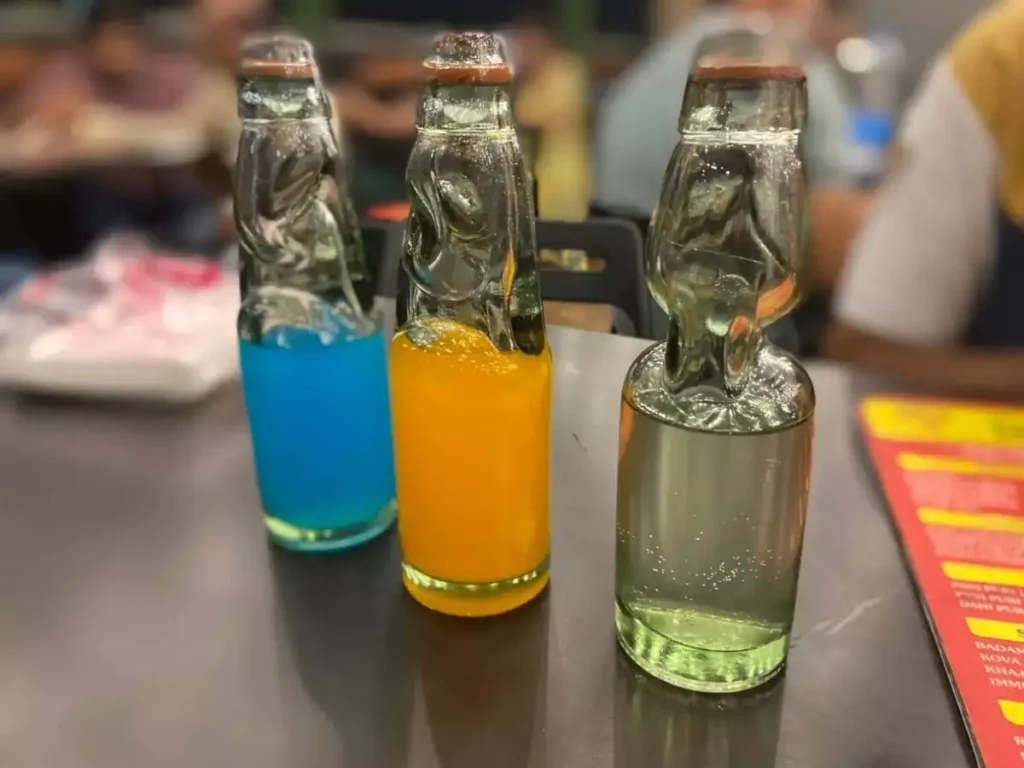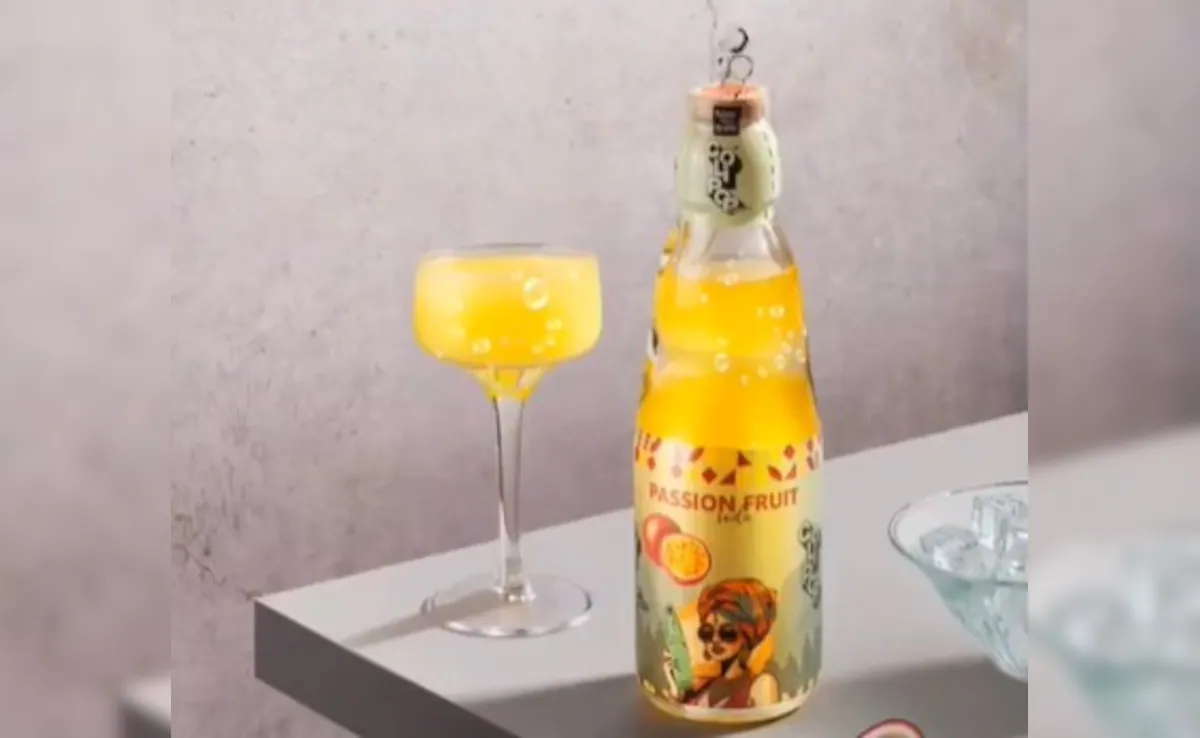Goli Soda rebranded has become one of India’s most refreshing success stories. Once a nostalgic street-side drink sold in traditional glass bottles with a marble stopper, Goli Soda has now been given a modern twist and is finding new life in international markets. According to the Centre, this rebranding effort is bubbling to success across the United States, the United Kingdom, and Gulf countries.
This transformation shows how a humble, old-fashioned fizzy drink is being reimagined for a new generation of consumers while preserving its cultural heritage. The story of Goli Soda rebranded is not just about a beverage—it’s about nostalgia, innovation, and India’s growing presence in the global food and drink industry.
The Charm of Goli Soda
For decades, Goli Soda was a symbol of Indian summers. Found in small shops and roadside stalls, it was known for its unique bottle sealed with a marble (locally called “goli”). Children would eagerly push the marble down to release the fizz, and adults enjoyed its refreshing taste in flavors like lemon, orange, and jeera.
The drink was affordable, accessible, and fun. But as international soft drink giants entered the Indian market, Goli Soda slowly lost ground. Its old-fashioned image and lack of large-scale marketing made it fade into the background. Yet, for many Indians, it remained a treasured memory.
Why Rebranding Became Essential
The decision to rebrand Goli Soda came at a time when consumers around the world began searching for healthier, more authentic alternatives to sugary sodas. Millennials and Gen Z are more conscious of what they drink. They want beverages that not only taste good but also connect to a story and a sense of authenticity.
Rebranding Goli Soda meant updating its packaging, marketing, and flavors to appeal to a wider audience. Instead of just a roadside drink, it is now presented as a trendy, nostalgic yet modern beverage. The Centre’s push for rebranding also aligns with India’s efforts to promote local products globally under initiatives like “Make in India” and “Vocal for Local.”
Goli Soda Rebranded for Global Taste
One of the biggest challenges in taking Goli Soda to international markets was balancing its traditional essence with modern expectations. The rebranded versions now feature sleek glass and recyclable cans, ensuring they meet global packaging standards.
Flavors have been diversified too. Alongside classics like lemon and orange, new variations include mint, ginger, berry, and even low-sugar or naturally sweetened versions. These adaptations cater to health-conscious consumers in the US, UK, and Gulf regions while maintaining the original fizzy charm.
Marketing strategies also highlight its nostalgic roots. Campaigns tap into the cultural memory of older generations while presenting Goli Soda as a fun, Instagram-worthy beverage for younger audiences.

Success in the US and UK
In the US and UK, Goli Soda rebranded has gained traction as an “exotic” and “heritage” drink. Specialty stores and Indian supermarkets have embraced it, and online platforms have made it widely available.
For health-conscious Western consumers, its relatively natural flavors and lack of artificial additives stand out compared to mainstream soft drinks. The unique bottle design, with its iconic marble, has become a talking point and even a collectible item. Pop-up stalls at cultural events, food festivals, and Indian diaspora gatherings have played a big role in building visibility.
Restaurants and cafes have also started stocking Goli Soda, offering it as a quirky alternative to colas. For many second-generation Indians abroad, drinking Goli Soda is also about reconnecting with their roots.
Bubbling Success in Gulf Countries
The Gulf countries, with their large Indian diaspora population, have provided a natural market for Goli Soda rebranded. Nostalgia plays a huge role here. For many Indians living in the UAE, Saudi Arabia, or Qatar, sipping Goli Soda is like taking a trip back home.
Supermarkets in Dubai and Abu Dhabi already stock rebranded Goli Soda, and demand is steadily rising. Its affordability compared to premium sodas also makes it attractive for a wide range of consumers in the Gulf. Moreover, in a hot climate, its refreshing and fizzy nature perfectly matches the lifestyle of the region.
The Role of the Centre
According to reports, the Indian government’s support has been crucial in promoting Goli Soda rebranded abroad. Initiatives to promote Indian heritage foods and drinks, trade fairs showcasing local products, and diplomatic efforts have all contributed to this success story.
The Centre sees Goli Soda not just as a product but as a representation of India’s soft power. By reintroducing this drink to the world, India is highlighting its cultural identity while boosting exports and supporting small-scale manufacturers back home.
Challenges Along the Way
Despite its growing success, Goli Soda rebranded still faces challenges. Competing with global beverage giants requires significant investment in marketing and distribution. Maintaining consistent quality across international markets is also essential, especially since many traditional Goli Soda bottles were locally produced with variations in taste.
There is also the issue of scalability. While nostalgia works in markets with a strong Indian diaspora, tapping into wider mainstream audiences in the West requires more aggressive branding and storytelling.
What Makes Goli Soda Rebranded Stand Out
Several factors explain why this humble drink is finding new life internationally:
- Nostalgia: It connects older consumers with memories of childhood.
- Uniqueness: The marble-stopper bottle is unlike any other soft drink packaging.
- Healthier Image: Compared to heavily processed sodas, Goli Soda is seen as more natural.
- Affordability: It remains a low-cost alternative in most markets.
- Cultural Identity: It represents India’s heritage, adding a storytelling angle that appeals globally.
Future Outlook
The journey of Goli Soda rebranded is just beginning. With continued government support, innovative marketing, and expansion into more international markets, its future looks promising. Plans to introduce more sustainable packaging, low-calorie versions, and tie-ups with cafes and restaurants worldwide could further strengthen its position.
In India, the rebranded soda is also making a comeback. Young people who never experienced the original Goli Soda are discovering it as a trendy, retro beverage. Urban cafes are serving it as part of fusion menus, mixing it into cocktails or mocktails.
Conclusion
Goli Soda rebranded is more than a drink—it is a story of transformation. From a fading roadside refreshment to an international symbol of nostalgia and innovation, it shows how traditional products can reinvent themselves for the modern age.
By bubbling to success in the US, UK, and Gulf countries, Goli Soda rebranded proves that heritage, when blended with smart rebranding, can capture global attention. What was once a simple childhood treat is now becoming India’s sparkling ambassador to the world.
Read More: Protected: Omnia Afify: The Travel Designer Empowering Women Through Adventure



